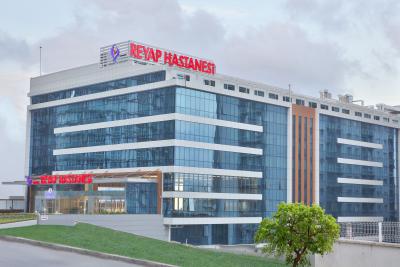

Orthopedic trauma is any serious injury to bones, joints, and soft tissue from an external source. These injuries are often the result of a sudden event such as a car accident or a fall.
Trauma can also be caused by overuse, for example, long-distance running is a common cause of tibial stress fractures and small hairline cracks in the lower leg. Physical violence, sports injuries, and natural disasters can also lead to orthopedic trauma.
The aim of the orthopedics and traumatology department in our hospital is to restore the function of injured body parts as quickly and effectively as possible. Sometimes orthopedic trauma is immediately apparent and requires urgent care.
Other times orthopedic trauma is not life-threatening but still requires special care. Some of the most common injuries effectively treated by an orthopedic trauma specialist include:
Closed fractures
Open fractures
Stress fractures (Small, capillary cracks in the bone caused by overuse)
Dislocation
Severe injuries
Orthopedic surgeons have advanced knowledge about the musculoskeletal system and perform diagnosis and treatment to restore the function of the damaged organ in the best way.
Arthroplasty surgery (Joint prostheses)
Arthroplasty is a surgical procedure performed to restore the function of the joint. With the resurfacing of the bones, the joint can be repaired. An artificial joint (prosthesis) can also be used. Various types of arthritis can affect joints. Osteoarthritis or degenerative joint disease is the loss of cartilage or cushion in the joint and is the most common cause of arthroplasty.
The most common usage areas of arthroplasty surgery are;
Shoulder prostheses
Elbow prosthesis
Hip prostheses
Knee prostheses
Ankle prosthesis
Foot thumb prosthesis
Pediatric orthopedics
Pediatric orthopedic surgeons diagnose, treat, and manage musculoskeletal problems of children aged 0-16, such as limb and spine deformities, scoliosis, bone, and joint infections, and broken bones. Children with complex pediatric problems such as developmental delay, skeletal dysplasias, or other syndromes are usually best managed by a multidisciplinary medical-surgical team.
The most common diseases and conditions in pediatric orthopedics are;
Hip dislocation
Flat foot (Pes planus)
Cerebral palsy
Foot deformities (Pes equinovarus)
Traumatology
Traumatology is a medical service that examines the effects of sudden and severe harmful events that damage various organs and tissues. Traumatology is also the study of intervention methods and techniques used to restore the integrity of the body after a trauma. The traumatologist defines the extent of the damage caused by a traumatic situation and restores the body to its former functional state as much as possible.
This department deals with any external or internal body injury caused by the action of mechanical, chemical, or thermal violence, in which the human body may be exposed to trauma.
Lesions may come from different origins, such as cuts, firearms, physical or chemical agents, and their severity depends on the strength of the cause in question.
Frequently performed treatments in the traumatology department;
Treatment of fractures and dislocations of the large, medium, and small bones of the upper and lower extremities
Pseudoarthrosis (nonunion) treatment
Hand surgery and microsurgery
Hand surgery is a sub-branch of orthopedics and traumatology. Hand surgery is a branch that covers the treatment and surgery of all diseases in our body, from shoulder to fingertip, including hand, arm, and fingers.
Our hands are the most functional part of the movement system. Unprotected exposure to sickness and injury is one of the most common causes of hand-related illness. For this reason, they must be treated by specialists in this field. Conditions treated with hand surgery are;
Hand and finger fractures
Tendon and nerve injuries
Finger fractures
Hand tumors
Congenital hand and finger anomalies
Nerve congestion
Congenital or injury-induced hand and arm paralysis
Foot and ankle surgery
Foot and ankle surgeons provide comprehensive medical and surgical care for a wide variety of foot and ankle conditions. These conditions can be common or complex disorders and affect people of all ages. Surgeons are uniquely qualified to detect early stages of diseases that show warning signs such as diabetes, arthritis, and cardiovascular disease in the lower extremities and can treat foot diseases that decrease patients’ quality of life and threaten their overall health. Some of the common foot and ankle disorders;
Hallux valgus
Hallux rigidus
Pes Planus
Pes Cavus treatments
Deformity correction and lengthening
Deformity correction is the surgical modification of bone that grows incorrectly as a result of a disease or condition, such as a crooked knee.
Spinal deformity correction surgery can be used to help patients with other conditions affecting the spine, such as scoliosis, kyphosis, trauma, or ankylosing spondylitis. Corrective surgery can also be used for cases where the legs, knees, or ankles grow at the wrong angles or lengths.
Nerve compression syndromes
Nerve compression syndrome occurs when a nerve is compressed and usually occurs in one place. Nerves in the torso, limbs, and extremities may be affected. Common symptoms include pain, numbness, and muscle weakness in the affected area.
Nerve compression syndromes are often caused by repetitive injuries. Medical conditions such as rheumatoid arthritis, diabetes, or hypothyroidism may also be effective.
There are several different types of nerve compression syndrome. Each affects a different peripheral nerve. The following are some of the most common types of nerve compression syndromes:
Carpal tunnel syndromes
Cubital tunnel syndromes
Suprascapular nerve compression syndrome
Guyon’s canal syndrome
Meralgia paresthetica
Radial nerve compression syndrome
Surgical procedures are often considered the last option in the treatment plan. Not everyone with nerve compression syndrome is suitable for surgery. The surgical procedure required depends on the type of nerve compression syndrome, the degree of compression, and the nerves and structures affected. Every procedure has its risks and benefits. The outcome of the operation depends on many factors such as how long the symptoms have been on, how severe the symptoms have been, and any other underlying health conditions the patients may have.
Scoliosis kyphosis and spondylolisthesis surgeries
Kyphosis is the normal curvature of the rib-bearing thoracic spine. Severe kyphosis may develop early in life as a result of poor posture. Kyphosis means the spine is tilted forward. Although kyphosis generally affects women, it can also develop in men. The extreme form of kyphosis can cause a hump in the scapula area in the upper back. Kyphosis can also affect men and women with osteoporosis. Generally, mild scoliosis does not cause kyphotic curvature, significant pain, or disability. However, when the deformity is progressive and/or associated with other spinal conditions, it can cause significant pain and disability and requires comprehensive treatment.
Treatment of adult patients with scoliosis kyphosis depends on the severity of pain, nerve compression, and spinal deformity. Since surgical treatments are usually major operations, the age and general medical condition of the patient is also an important concern. Unless there is a serious neurological deficit such as leg weakness and numbness, conservative treatment is initially recommended for almost all patients. Patients who cannot benefit from conservative measures such as physical therapy and assistive devices are usually candidates for surgical intervention.
Spondylolisthesis means that one vertebra slips over the underlying one. This disease mainly affects the elderly as a degenerative disease but may be congenital or discovered early in life. In most cases, spondylolisthesis is treated without surgery. Treatment may include physical therapy, steroid-anesthetic injections, and medication for inflammation and pain.
A surgical procedure may be considered when nonsurgical treatment fails and depending on the patient’s symptoms. In severe cases of shear or instability, a spinal fusion may be necessary. Spinal fusion helps stabilize the weak area of the spine using rods, screws or plates, and bone graft. Leg pain, weakness, or numbness can be relieved with a surgical procedure called a foraminotomy.
PRP and intra-articular injection treatments
The combination of PRP (Platelet-rich plasma) with surgical techniques in orthopedic surgery allows a wide variety of therapeutic strategies in the management of injuries of orthopedics and sports medicine.
The use of different therapeutic elements, including PRP as a biological stimulus and rehabilitation and physiotherapy treatments as a mechanical stimulus, provides a high-quality health service that will help the physicians achieve their goal, stop the progression of the disease and improve function as soon as possible.
Some of the conditions that can be treated with PRP and other injection applications;
Tendinopathies
Heel spurs
Tennis elbow
Joint arthrosis
Arthroscopy and sports injuries
Arthroscopy is a minimally invasive procedure that uses a tiny camera to repair joint injuries. During arthroscopic surgery, the surgeon inserts a narrow tube with a fiber-optic video camera through a small incision.
Sports injuries can occur during sports or exercise activities. Sports injuries can be caused by accidents, inadequate training, improper use of protective devices, or inadequate stretching or warm-up exercises. The most common sports injuries are sprains, fractures, and dislocations. Sports injuries include:
Knee arthroscopy
Anterior and posterior cruciate ligament tear
Torn meniscus
Internal and external lateral ligament tears
Patellar instability
Performing arthroscopy in sports surgery has many benefits. The incisions are small, so scarring is minimal and less muscle damage occurs. Recovery is faster than conventional surgery because arthroscopy is an outpatient surgery. Also, rehabilitation is faster and generally more comfortable.
Shoulder arthroscopy
Shoulder arthroscopy is a surgery that uses a small camera called an arthroscope to examine or repair tissues inside or around the shoulder joint. This surgery is usually performed under general anesthesia. However, it is also an option to numb the arm and shoulder area with local anesthesia.
During surgery, the doctor inserts the arthroscope through a small incision on the patients’ shoulder and is connected to a video monitor in the operating room. It examines all the tissues of the shoulder joint and the area above the joint. These tissues include cartilage, bones, tendons, and ligaments.
It repairs damaged tissues. To do this, your surgeon makes one to three more small incisions and inserts other instruments into them. The damage in the muscle, tendon, or cartilage is fixed. Any damaged tissue is removed. The surgeon may perform one or more of the treatments for rotator cuff repair, impingement syndrome, and shoulder instability during your surgery.
Conditions that can be treated with shoulder arthroscopy are;
Rotator cuff injury
Slap tear
Bankart repair for recurrent dislocations
Impingement syndromes
Frozen shoulder
Ankle arthroscopy
Ankle arthroscopy is a surgery that uses a small camera and surgical instruments to examine or repair tissues in or around the ankle. The operation method and the number of incisions are similar to shoulder arthroscopy. Some of the conditions that can be treated with ankle arthroscopy are;
Ankle cartilage injuries
Anterior-posterior impingement syndromes
Haglund’s deformity
Achilles tendinitis
Wrist arthroscopy
Wrist arthroscopy is a wrist surgery that allows a doctor to see inside the joint. It is done after a patient has suffered an injury such as a fall or bend in the wrist and experiences pain, or swelling. These symptoms may mean that the wrist has an internal problem. The most common use of this process are;
Chronic wrist pain
Fractures of the wrist
Ganglion cysts
Ligament / TFCC tear
Scaphoid fracture repair
Carpal tunnel syndrome
Arthroscopy is usually the best way to diagnose and treat the injury. The procedure can be used to help adjust wrist fractures, remove some ganglia of the wrist, treat infection, or remove excess joint lining associated with inflammation from conditions such as rheumatoid arthritis.
After the surgery, it is necessary to wear a bandage that can prevent wrist movement. This will protect the area and provide pain relief. Arthroscopy probably does not require hospitalization. Fingers should move freely and finger movement is often encouraged to limit swelling and stiffness. The surgeon provides instructions regarding wound care, safe activities, and any work or exercise restrictions. It is important to keep the ankle above heart level to prevent swelling and pain after wrist surgery.





















